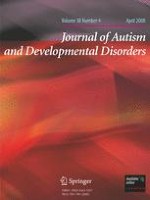01-04-2008 | Original Paper
Using the Autism Diagnostic Interview-Revised and the Autism Diagnostic Observation Schedule with Young Children with Developmental Delay: Evaluating Diagnostic Validity
Gepubliceerd in: Journal of Autism and Developmental Disorders | Uitgave 4/2008
Log in om toegang te krijgenAbstract
Few studies have focused on the validity of the ADI-R and ADOS in the assessment of preschool children with developmental delay. This study aimed to evaluate the diagnostic validity of the ADI-R and the ADOS in young children. Two-hundred and nine children aged 20–55 months participated in the study, 120 of whom received a diagnosis of autism. ADI-R and ADOS diagnostic classifications were compared to consensus clinical diagnoses. Children with a clinical diagnosis of autism scored significantly higher on all algorithm domains of the ADI-R and ADOS. The ADOS performed better than the ADI-R in comparison to consensus clinical diagnosis. Characteristics of the ADI-R and ADOS false positive and false negative cases are explored. Further research is recommended in terms of examining which items of the ADI-R best predict a diagnosis of autism for very young children with developmental problems.
